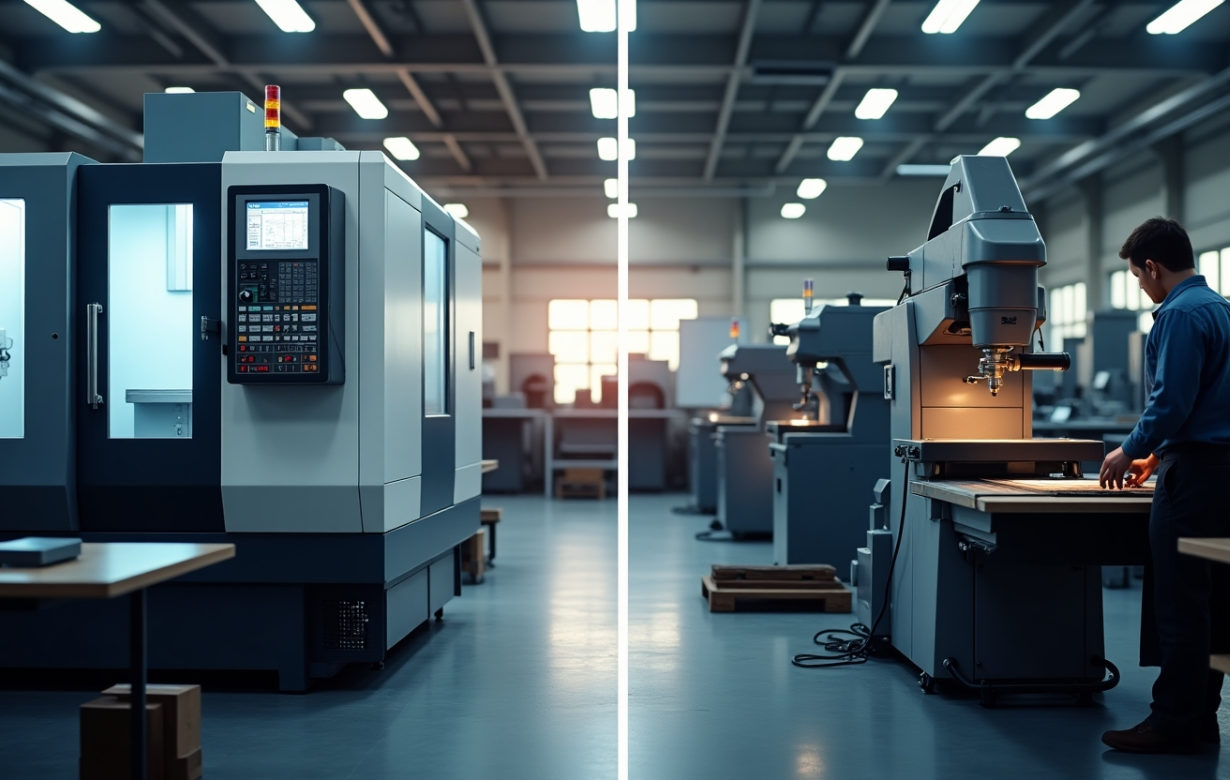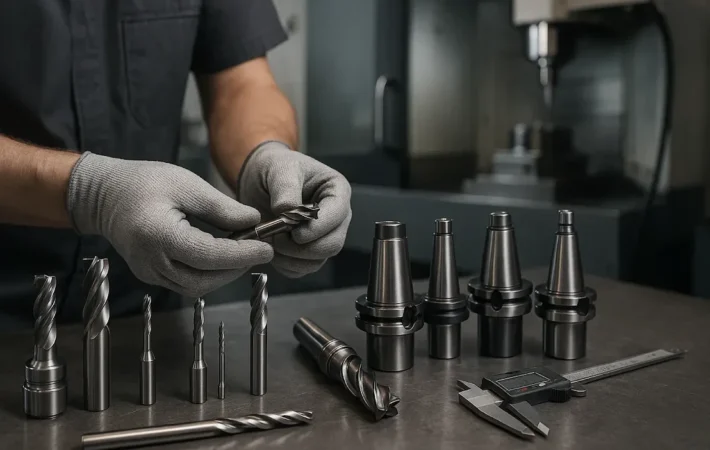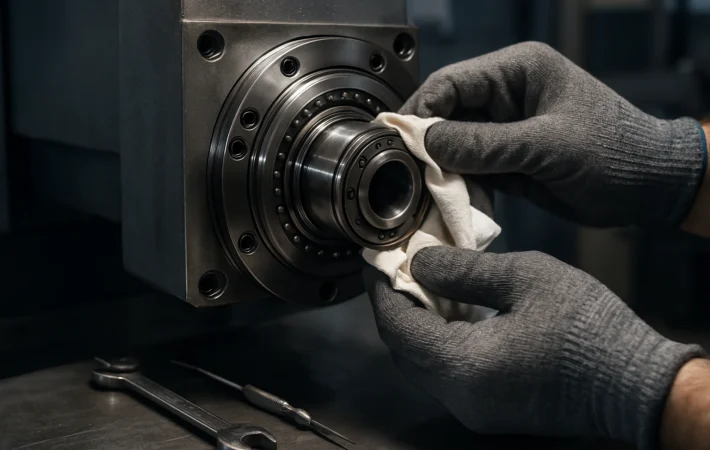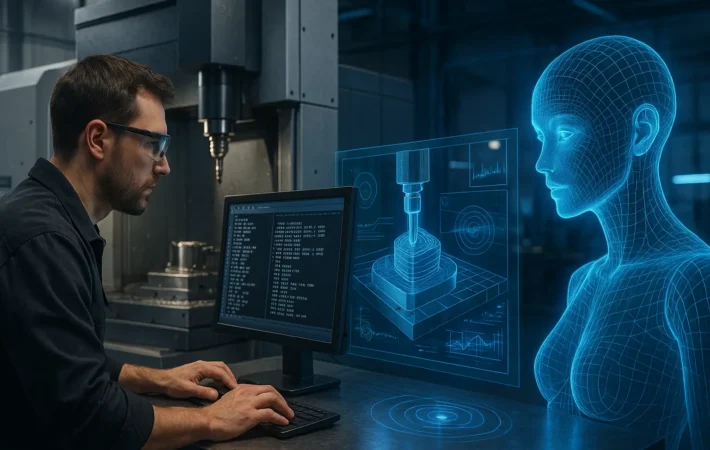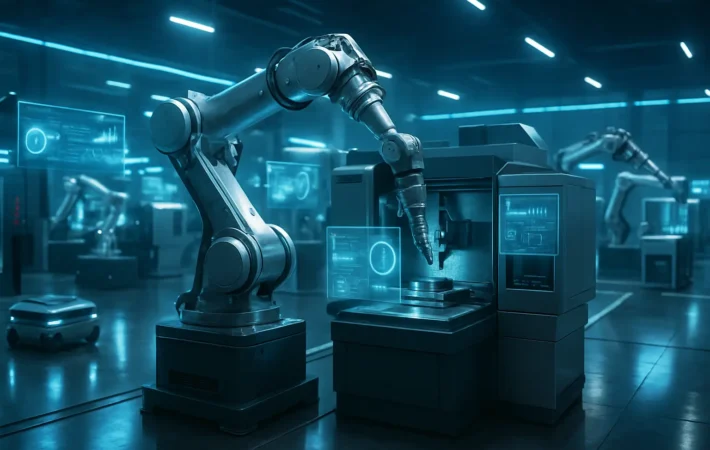CNC machines are the new normal for all the machining and manufacturing work that happens all around the world. The hard labour manual conventional machining systems have been transformed by this software backed CNC machines that can get you a product done with just a few lines of coding. The innovative technology of integrated CNC machines have turned out to be the best option for manufacturers, not only because of the ease of working but also due to the accuracy of the products they can produce. Both CNC and Conventional machining work on the same purpose of removing materials from a piece and giving it the right shape, but there are some stark differences between them. If you are curious about those differences, then let’s dive deep into that and find out the details.
Top differences between CNC and Conventional machining
Now, though the work and result of both the machining processes are the same, the whole process is still hugely different from each other. Here are the top differences between CNC and conventional machining
- Definition and Mechanism –
- CNC Machining – CNC machining happens with the help of automated systems that execute a pre-programmed set of sequence of operations. All the manufacturing works of CNC machines are done with the help of Computer Aided Design (CAD) and Computer Aided Manufacturing (CAM) software.
- Conventional machining – In this method of machining, the operations of the machine, including lathes, mills, and grinders, are manually controlled. The movements of the machines are controlled by different operators using pedals, handwheels, and levers.
- Precision and accuracy –
- CNC machining – CNC machines are known for their precision and accuracy in the whole machining process. The movements of the parts of CNC machines are totally controlled by different computerized commands. The CNC machines can produce thousands of identical parts with minimal variation due to their automated manufacturing technology.
- Conventional machining – Maintaining precision in conventional machining is tough, as every part needs human labour, and no matter how good your operators are, they can still make mistakes. Human error, fatigue, and variation of techniques of different operators can actually lead to different types of errors in the final product.
- Consistency –
- CNC machining – If you are in a mass production business, then CNC machines can be the best choice because once the instructions are coded in the machine’s operating system, it will be able to produce several identical products for your business in one go. It will also reduce the risk of errors in similarity between two products and help you in the mass production of one product at a consistent speed.
- Conventional machining – In conventional machining, it becomes very hard to maintain consistency, because it is prone to human errors. Also, if you don’t have the same operator, then that would also cause a problem with the consistency of the production and consistency of the quality of the product.
- Production speed –
- CNC machining – CNC machines are the fastest when it comes to manufacturing. Once the instructions of machining are coded in the machine, the machining work is done at an unmatchable speed that too with negligible human interference. These high output rates of the CNC machines help businesses scale their business faster.
- Conventional machining – The conventional machining speed is dependent upon the work skills of the operator and also the need for constant adjustments of the parts. It needs constant attention from the operator, making it hard to produce a large number of products at once.
- Labour and skill requirements –
- CNC machining – For CNC machining work, you will need operators who are highly skilled with programming (G-CODE), troubleshooting, and machine setup. They should also have the ability to interpret CAD/CAM designs. Though CNC machines don’t need manual efforts during the machining process, tech-skilled operators are highly important for it.
- Conventional machining – Conventional machining is totally dependent upon the skills of an operator, who should have deep knowledge about cutting technologies, machine properties, and machine operation. They should be comfortable with making real time decisions to run the whole machining process in a smooth way.
- Cost effectiveness –
- CNC machining – If we think of the upfront costs, then it is definitely higher for CNC machines, considering you are buying a totally new CNC machine, it decreases substantially if you buy a used one. Also, the initial cost can be recovered in a short time with a high volume of production done with the help of that CNC machine.
- Conventional machining – The initial investment behind a conventional machine is often lower than that of a CNC machine. But also, you can’t produce that much value with the help of these machines, which you can earn using a CNC machine, as their production speed is slow compared to that of CNCs.
- Safety considerations –
- CNC machining – Due to the automated features of the CNC machines, the contact of human beings with the hazardous elements of the CNC machines has been very low, so safety is good in these machines. Also, a lot of new and advanced CNC machines come up with features like emergency stops and protective enclosures.
- Conventional machining – For conventional machining work, the operators have to work with the machine in close contact with moving parts, which makes it dangerous and unsafe for the operators. Safety measures should be taken before working with conventional machines.
Conclusion
In conclusion, CNC machines are definitely the more advanced and better options for manufacturers to use because of their ease of use. Also, it can save your cost of employees and help you scale your business more. But one problem with the CNCs is their upfront cost, which can also be addressed if you buy a used one from MachineStation, a platform where you can get the best machines at the most affordable price.

